Located approximately 1,800 light-years away in the direction of the constellation Cygnus, there is a planet called Kepler-452b. Because its conditions are very similar to Earth's, it's also been dubbed Earth 2.0. Scientists even suspect alien civilizations may exist there. Let's take a closer look at this planet.
Kepler-452b is a super-Earth (simply put, a super-Earth is a terrestrial planet larger than Earth). Scientists estimate its radius to be approximately 1.5 times that of Earth and its mass to be approximately 5 times that of Earth.
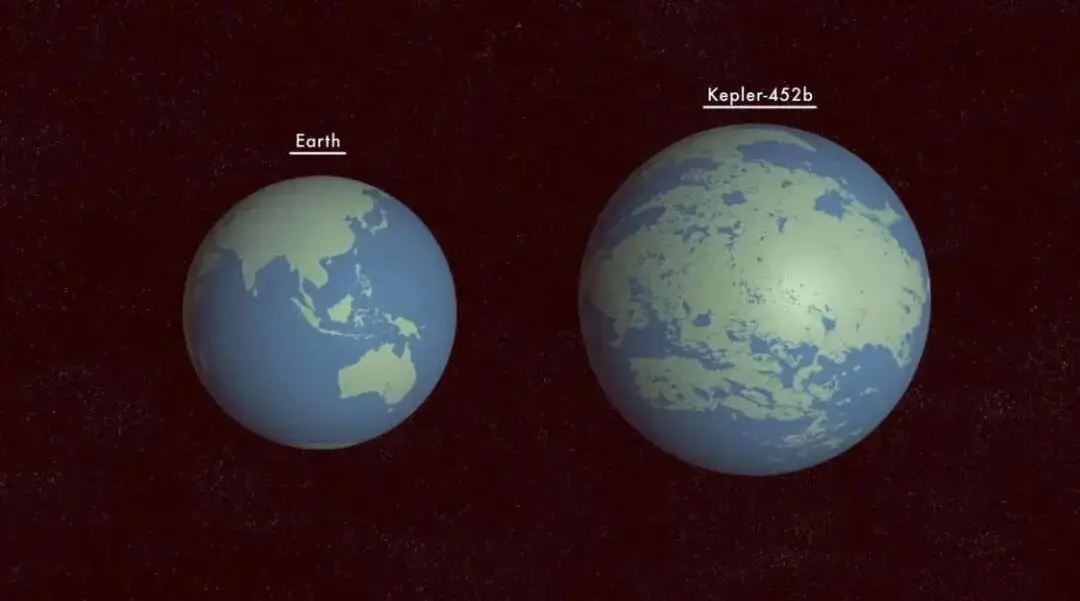
(↑ Comparison of Kepler-452b and Earth)
Based on its size, Kepler-452b isn't exactly Earth-like (after all, it's much larger), but the picture changes when its host star is taken into account.
Kepler-452b's host star is called Kepler-452, a yellow dwarf very similar to the Sun. Its mass is approximately 1.037 times that of the Sun, its radius is about 1.11 times that of the Sun, and its surface temperature is about 5757K, only slightly lower than the Sun's surface temperature of about 5778K.
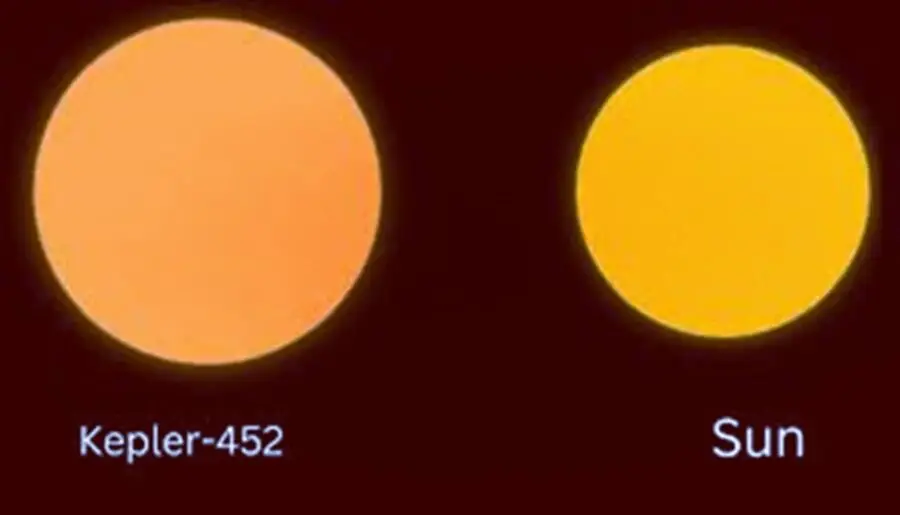
(↑ Comparison of Kepler-452b and the Sun)
We know that one of the essential factors for Earth's vibrant existence is its location in the Sun's habitable zone. This means that Earth is neither too far nor too close to the Sun, with surface temperatures ideal for the widespread existence of liquid water, which is essential for life (at least as we know it).
Generally speaking, the average distance between Earth and the Sun is 1 astronomical unit (AU), approximately 150 million kilometers. What is the average distance between Kepler-452b and its host star? The answer is: approximately 1.04 AU.
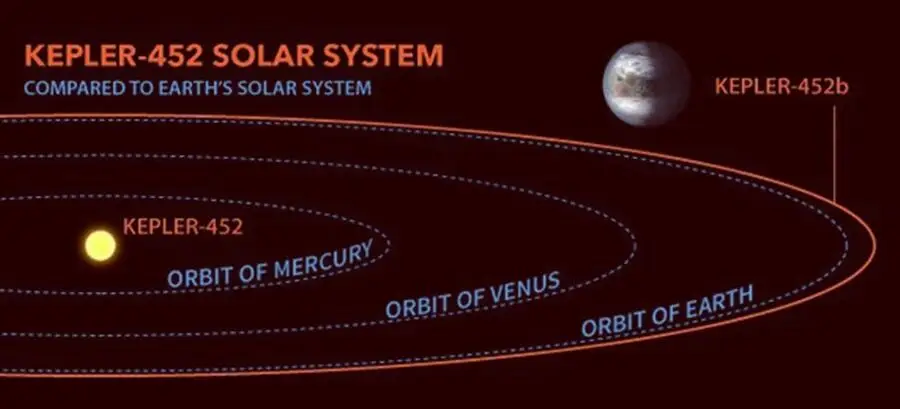
(↑ Comparison of Kepler-452b's orbit with Earth, Venus, and Mercury in the solar system)
In addition, observational data indicates that Kepler-452b orbits its star every 385 Earth days. In other words, according to our Earthly sense of time, a year on this planet is 385 days.
As you can see, Kepler-452b's distance from its host star and orbital orbit are very similar to Earth's. Furthermore, given that its host star is very similar to the Sun, there's strong reason to believe this planet is also located in the habitable zone.
It's conceivable that this planet, like Earth, could have mountains and water, perhaps even large oceans of liquid water, conditions that would make life possible.
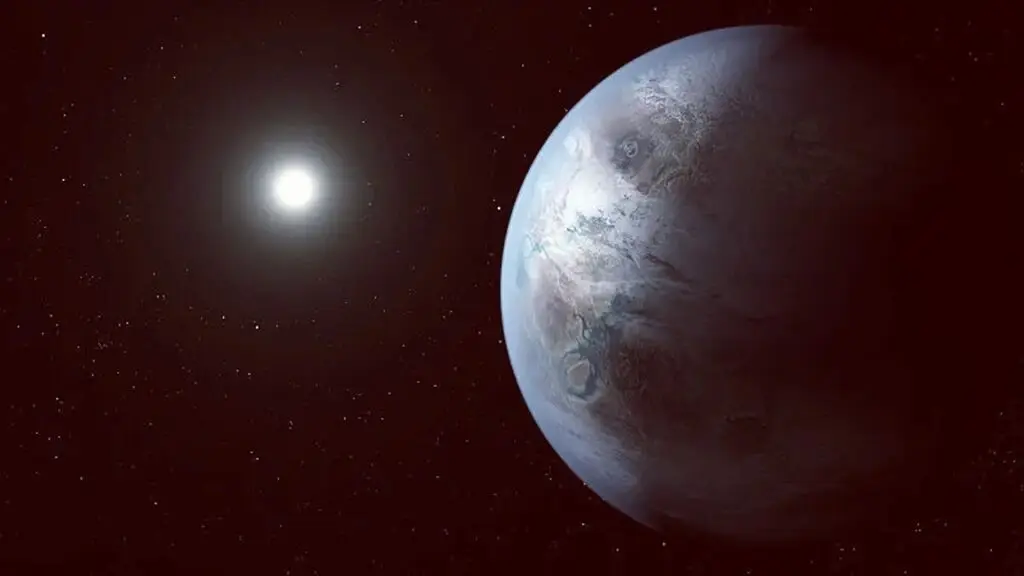
It's for this reason that Kepler-452b is called Earth 2.0. So why do scientists suspect alien civilizations there? The reason: the planet has been in the habitable zone for so long.
Based on observational data and stellar evolution models, scientists estimate that Kepler-452b formed approximately 6.2 billion years ago, and that Kepler-452b formed no more than 100 million years after its formation. Crucially, this planet has remained in the habitable zone for almost its entire existence since its formation, and has remained so to this day (for at least 6 billion years).
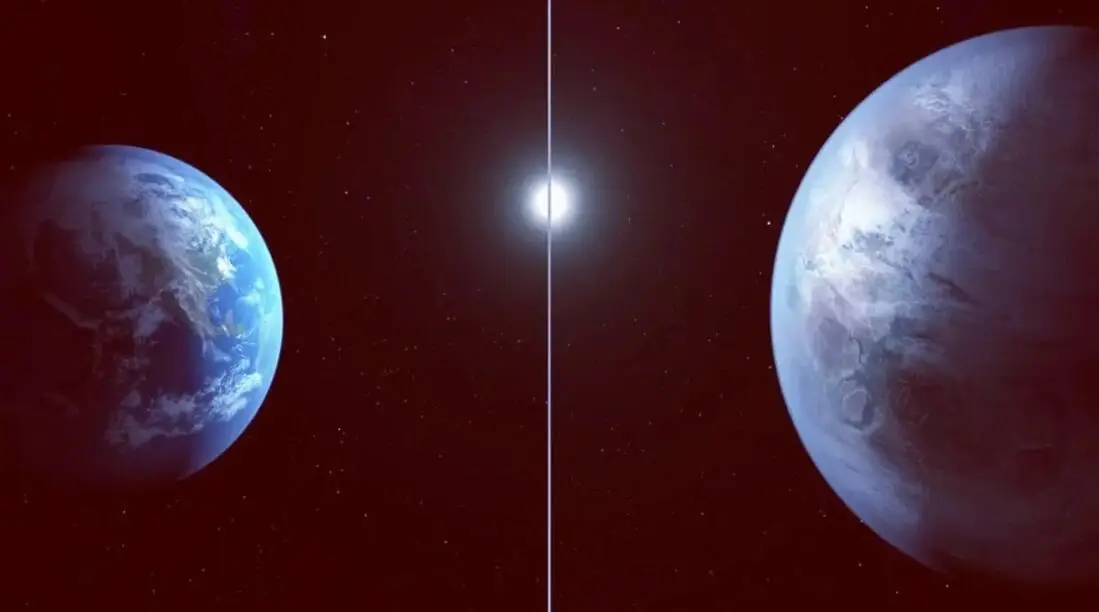
In comparison, the Sun formed approximately 4.6 billion years ago, while the Earth formed approximately 4.55 billion years ago. This means Kepler-452b has been in the habitable zone for much longer than Earth.
Based on this, we can reasonably infer that if life exists on Kepler-452b, it should have had ample time to evolve, making the existence of alien civilizations on this planet possible.
Scientists speculate that if alien civilizations do exist on Kepler-452b, they might use radio communication technology extensively, just as we do.
In the past, scientists used ATA to scan Kepler-452b for radio signals, covering over 2 billion different radio frequency bands, but unfortunately, they found nothing.

(↑ATA is a radio telescope array primarily used to search for signals from extraterrestrial civilizations)
Perhaps Kepler-452b doesn't harbor the alien civilization we imagine. Or perhaps, there truly is an alien civilization on this planet, but their technology far surpasses ours, having long since abandoned "outdated" radio technology in favor of more advanced communication techniques (such as neutrinos or gravitational waves), making them virtually undetectable to us...




